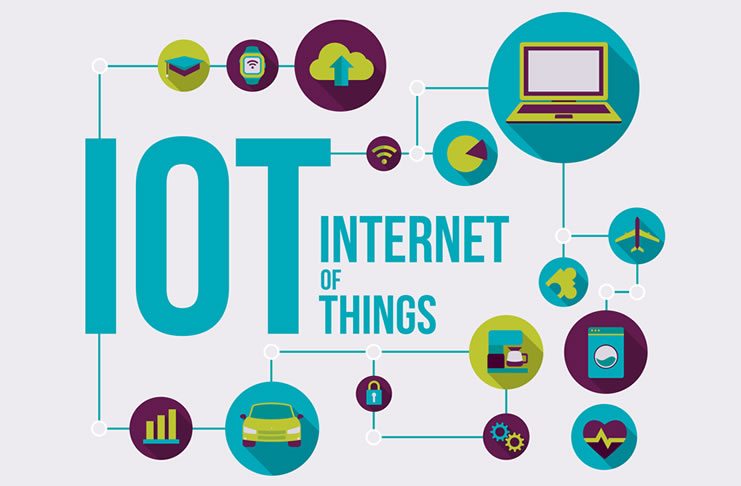How to Implement a Tech Help Desk for Teachers & Students
The article discusses the importance of setting up a tech help desk in educational institutions to support teachers and students in effectively using...
4 min read
 Aria - LATechNet Team
:
Jul 11, 2025 6:02:57 AM
Aria - LATechNet Team
:
Jul 11, 2025 6:02:57 AM
If you've ever worked closely with K-12 IT teams, you know managing devices across a school district can feel like juggling too many balls at once. Traditionally, device management meant manually updating software, checking each device individually, and troubleshooting issues one by one—a task that easily overwhelmed already busy IT staff.
On top of that, K-12 schools often operate with tight budgets and limited resources, making effective IT allocation not just helpful, but essential. Every minute spent manually managing devices is time taken away from supporting teachers, students, and educational initiatives directly. That's why finding smarter ways to handle devices isn't just convenient—it's crucial for helping schools focus more on teaching and less on technology headaches.
Managing school technology manually might seem doable at first, but it quickly becomes overwhelming for K-12 IT teams. Just enrolling new devices can take up huge amounts of time and resources. In fact, around 70% of IT administrators spend more than 20 hours each week manually enrolling devices into their systems (sternx.de). That's precious time taken away from other important tasks!
Asset management also gets tricky. Without automated systems, keeping track of every device's status and usage is tough. This lack of clarity often leads schools to overspend, buying extra devices they don't really need or prematurely replacing equipment that's actually working fine.
And when problems arise, manual processes make issue resolution painfully slow. Without real-time insights into device health and security, IT teams struggle to respond quickly—leaving classrooms disrupted and students frustrated.
Remember the days of manually enrolling each student device? Automated device management has changed all that, dramatically cutting down enrollment time. Instead of spending hours—or even days—on setup, IT teams can now deploy hundreds of devices within minutes. For instance, some schools report reducing device enrollment processes from a full week down to just a few hours, freeing IT staff to focus on more important tasks and boosting efficiency across the board.
Automated asset management systems help schools track and monitor how devices are utilized. This means schools can quickly spot underused resources and make smarter spending choices. A great example comes from a California charter school that saved over $25,000 annually by implementing automated asset tracking. By clearly seeing how resources were being used, they could better manage their budgets and avoid unnecessary purchases (assetpanda.com).
Automated management is also transforming tech support. AI-powered help desk systems are proving to be real game-changers, improving response and resolution times by 30–40% (k12insight.com). Plus, the adoption of real-time analytics platforms has surged by 239% in recent years. These tools streamline workflows, significantly easing administrative burdens and allowing IT teams to quickly identify and solve problems before they disrupt learning (numberanalytics.com).
Automated device management offers some amazing advantages that truly transform how K-12 IT teams operate. First, it significantly boosts operational efficiency, cutting down administrative workloads by as much as 43%, and speeding up issue resolution by about 68% (numberanalytics.com). Imagine the extra time educators and IT staff gain to focus on meaningful teaching and learning!
Additionally, managing devices through a centralized system greatly enhances security and compliance. This means schools can protect sensitive student data effectively and easily meet regulatory standards.
Finally, by automating routine tasks, IT teams can redirect their energy and resources towards strategic initiatives. Instead of constant troubleshooting, they're free to support innovative technology projects that directly enrich the classroom experience and encourage student engagement.
When you're ready to choose an automated device management platform, think carefully about which features best fit your school's needs. Does the platform scale easily as your district grows? Is it compatible with the systems you already have in place? Picking the right tool from the start can save headaches down the road and ensure smooth integration into your existing infrastructure.
Once you've selected the platform, clear communication is your best friend. Make sure everyone—teachers, administrators, and IT staff—understands what changes are coming and how they'll benefit. Offer training sessions to build confidence and excitement around the new system. After rollout, regularly check in to see how things are going. Keep an eye on how effectively the tools are being used, gather feedback, and be prepared to tweak your approach. Continuous improvement keeps everyone happy and ensures your automated device management remains successful long-term.
At LATechNet, we understand the challenges K-12 IT teams face every day. That's why we've mastered the art of implementing automated device management solutions specifically designed with schools in mind. We don't believe in one-size-fits-all; instead, we carefully customize AI-driven helpdesk tools and real-time analytics to fit your school's unique needs. By streamlining your asset management, we can help your district significantly reduce costs and boost operational efficiency, freeing your resources from tedious manual tasks. But our support doesn't end after implementation—we also offer continuous training and guidance to ensure your IT staff feels confident and ready to make the most of these powerful tools. Ultimately, our goal is simple: we want to empower your IT team to focus on meaningful strategies that genuinely improve teaching, learning, and educational outcomes.
Automated device management has truly reshaped how K-12 IT teams handle technology challenges every day. By simplifying tasks like software updates, security monitoring, and device tracking, IT staff can now spend less time troubleshooting and more time supporting teachers and students. This shift creates smoother operations, significant cost savings, and a stronger focus on educational outcomes. Schools that embrace this technology early are setting their students—and their IT teams—up for ongoing success. Moving forward, educational institutions should proactively explore automated device management solutions. Doing so not only boosts efficiency but also supports educators in creating dynamic, engaging learning environments. Ultimately, when technology runs smoothly behind the scenes, everyone in the school community benefits, paving the way for a brighter educational future.
The article discusses the importance of setting up a tech help desk in educational institutions to support teachers and students in effectively using...
Schools face new challenges that require innovative solutions, like data analytics, to improve student performance. By collecting and analyzing data...

The integration of IoT devices in modern classrooms offers enhanced learning experiences and operational efficiencies, transforming them into...